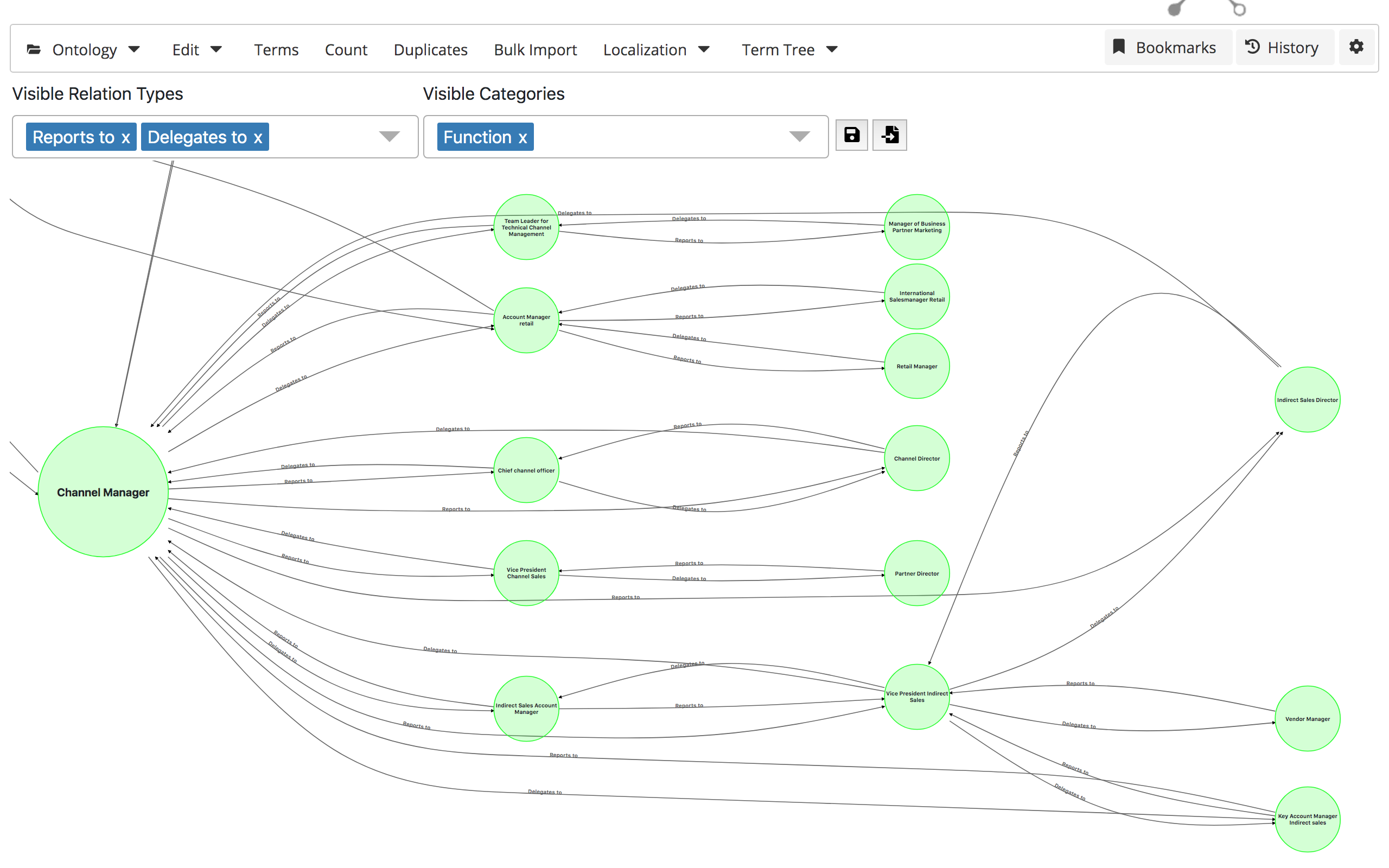On the use of semantic correlations in smart searching and matching technology
One of the most buzzed words in machine learning today is ‘ontology’. Yet, it is a quintessential element in making automatic language understanding a success. Even more so when it is used in searching and matching technology for HR-purposes. Filip De Geijter, founder and CEO at Actonomy, explains the why’s and hows of this remarkable piece of semantics. In essence, HR-ontologies are mapping the world of work.
Let’s start with a real example.
Someone looking for a new career in digital marketing is browsing job aggregator websites (such as Indeed or Stepstone). He enters the word ‘digital marketeer’, pushes the enter-button and then stares at his screen: a series of potential jobs pops up. At first, we are tempted to believe there is a 100 % match between the keyword entered and the jobs offered. Too bad, reality is much more complex. What if a job as ‘SEO-specialist’ is not recognized and displayed? Probably, only jobs called ‘digital marketer’ will appear on his screen.
Modelling meanings and correlations
The reason for this complexity is strikingly simple, and has everything to do with semantics (the meaning of words). Words have meanings, but these meanings can vary depending on their context, they can have synonyms, or have implicit content as well. All this just to say that words and their meanings have complex mutual relationships. The way we model all the meanings and correlations between words within a broader context is called an ‘ontology’. A simple example: there is an obvious relationship between the words ‘illness’ and ‘influenza’. Beware: some people confuse ‘HR-ontologies’ with ‘skills engines’: tools building skill sets based on machine learning.
The correlations between all these words are crucial when understanding language. And, consequently, an ontology is a powerful way to design an AI technology tool that can help finding good matches between job seekers and vacancies.
Luckily enough, the world we are working in, often can be described in an almost finite set of criteria. Think of parameters such as education, interests, soft skills, hard skills, contract types, experience, … Yet, the amount of combinations is enormous. In ICT, for example, Actonomy’s ontology knows 1.174 basic job titles (such as software developer, PHP-developer, …) and almost 5.000 skills (such as Java, SQL, team management, …).
In the AI recruitment technology developed at Actonomy, we assume there are about 100.000 basic job titles and 100.000 basic criteria. When combining all these criteria, you easily get 1 billion possible job titles. So, a PHP-developer consists of two concepts: PHP and developer. These job titles, when entered as keyword in a job search, have to be combined with other parameters, such as level (junior, medior, senior, …). Needless to say, the amount of potential combinations reaches astronomical heights.
Size does matter: Visualisation of correlations
Most existing technologies realize the importance of the correlations between all these words. But, sadly enough, they mostly model them in a hierarchical taxonomy (just like the way we classify animals). This is where Actonomy puts a mark: rather than sticking to rigid hierarchical classifications, Actonomy models all words and their meanings in a multidimensional network of meanings. Think of kind of a 3D-space where all words are visualized with all their relations to other words. A graph can visualize the enormous amount of correlations existing between all the words in an ontology.
Need an example? Take Hubspot and MS Dynamics, both CRM-systems. If you find your way in one of them, you can easily learn the other. In an ontology, both terms are correlated by means of their common skills (managing contacts). As such, ontologies add huge amounts of knowledge to searching algorithms as opposed to far too static taxonomies.
As Actonomy started developing its HR-ontology some 15 years ago, the amount of job titles, functions and skills has continuously been expanding. The more words are added and the more their correlations are described, the larger the ontology becomes. And the larger the ontology, the smarter the searching and matching gets. In that sense, size does really matter. It takes a certain critical mass before you can become relevant. Actonomy has passed that stage years ago already. As it was pioneering with the concept of ontologies in the HR-world, it today has a competitive advantage that is hard to beat on the market.
Time to harvest with HR-ontologies
Companies implementing Actonomy’s ontology, as part of the xMP candidate searching and matching software, can take advantage of this carefully cultivated and grown HR-ontology. It has continuously been taken care of by domain experts and experienced computational linguists. Specialists who know the difference between, say, a software developer and a software architect, or between an online marketer and a database marketer. Building up and servicing a steadily growing structured database of words and concepts needs meticulous experience and detailed knowledge. But the result is a never seen before piece of intelligence, smoothly integrated in a best of breed searching and matching technology.
Now, it is time for the recruitment community to harvest.
And the best is yet to come: ontologies are self-learning systems. The more input they get (job titles, functions, skills), the more correlations they can see, and the smarter they get. New job titles are automatically analyzed by screening the context, and their meaning is built up, and linked to related words.
As such, HR-ontologies, as used by Actonomy’s xMP, are great examples of applied machine learning. End 2019, the average recognition rate of keywords entered on job search sites using Actonomy’s technology reached an astonishing 95 %. As the machine keeps on learning (and interpreting the vast amount of typing mistakes candidates typically make), it is only reasonable to expect this score will get even higher. It is up to the recruitment industry to take advantage of this technology. Thanks to HR-ontologies, which manage to map the working world.







